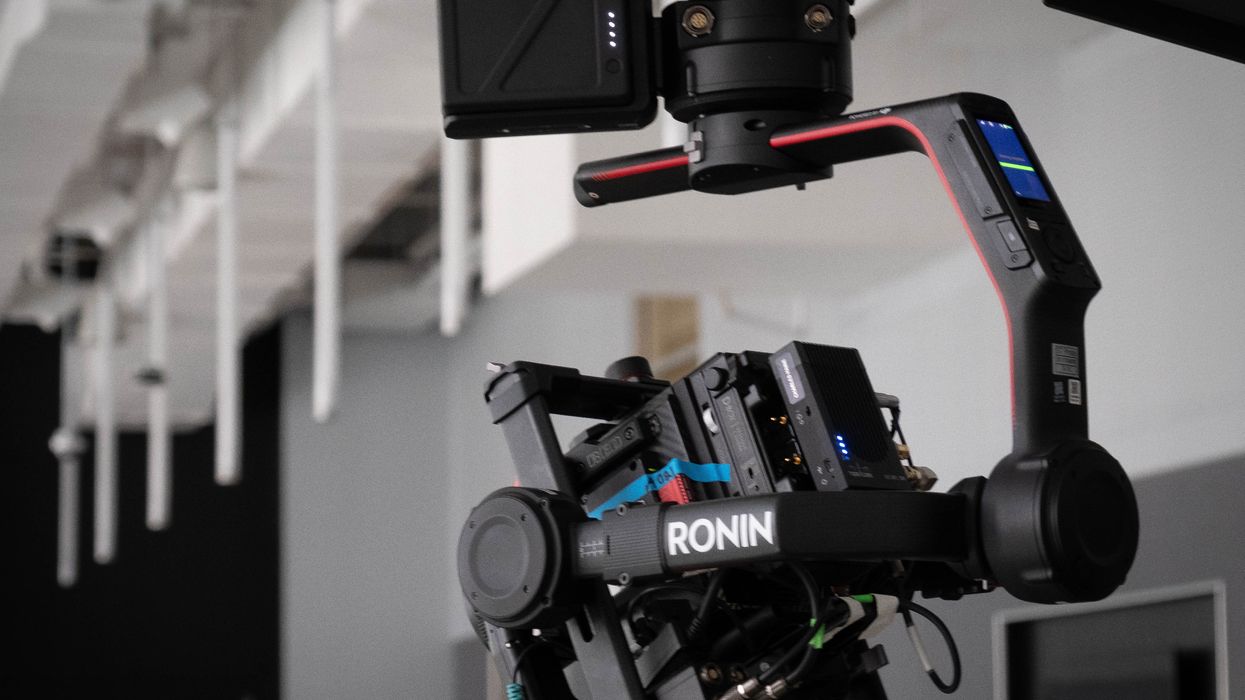DJI Force Makes Controlling Your Ronin Extremely Intuitive
DJI continues to refine how you interact with its popular line of camera stabilizers.

We enjoyed the DJI Ronin 2 when we tested it last year and were really excited when DJI rolled out affordable wheels at NAB last year for controlling the Ronin. The remote control that was already available for the R2 was nice, but it frankly didn't feel very "cinematic."
Operators have decades of experience using tripods and geared heads, having built up tremendous muscle memory for that way of thinking. The remote required not just learning how it worked, but also a changing of how you thought about operating.

We weren't nearly as excited about the device DJI launched alongside its new wheels, the DJI Force. Maybe it's just that the wheels were so exciting (or that NAB has too much going on), but we'll be the first to admit that we didn't really appreciate just how interesting a concept the DJI Force. We've now had a chance to spend some time with the Force during our recent shoot for Salty Pirate. We walked away impressed.
What precisely is the Force? Basically, it's a remote control for the Ronin2 that you bolt onto a normal tripod. Then, as you pan and tilt the tripod, the Ronin 2 will pan and tilt in sync. For it to work most effectively, you need a wireless follow focus system (we used a Teradek and strapped the 703 Bolt to the tripod with an articulated arm). You then sync it to the Ronin 2, and as you watch the image on the monitor, you can pan and tilt to your heart's content and it will stay in sync.

We were surprised by just how intuitively it worked. Of course, we shouldn't have been. Every operator has spent most of their career on fluid heads, as even gear head masters will admit that they end up on fluid heads most of the time. By building on that muscle memory, it was all of the sudden easier to plan out more complicated shots.
This was particularly useful for us since we were using a porta-jib and the jib adapter plate for the Ronin to effectively use the R2 as a remote head for complicated jib shots. This created a very sophisticated system that even five years ago would have been a very pricey rental, holding a beautifull Sigma Prime and a full 6K RED Helium package, all for a rental price most indies can afford.
The limitations we had with the DJI force were primarily the limitations of a fluid head tripod. We wanted a shot where the camera pointed straight down and then slowly pan up as we dollied and jibbbed over, but our fluid head, though very nice, didn't point all the way down. In order to do it, we had to "cheat" a bit, calibrating the DJI force while holding the tripod at an odd angle so that when we put the tripod in a "nearly straight down" position (which is the best most fluid heads will do), it was able to point straight down.

Overall, we loved it. There is a part of us that really wants to spend time with the DJI Wheels as well, but the same way we frequently end up with fluid heads on jobs, we suspect that the DJI Force is going to be more common as a controller than the wheels. It just builds on too many years and years of muscle memory for most operators to be ignored, even if it's not as "fancy" as the wheels.
Available now.
Tech Specs:
- Compatible with DJI Ronin 2 and Ronin-S
- 1.8 Mile wireless operating Distance
- 10 ms Latency
- 98' Wired Distance
- Adjust 3-Axis Speed
- 2.4 and 5.8 GHz Dual Frequency
- Up to 5-Hour Operation












